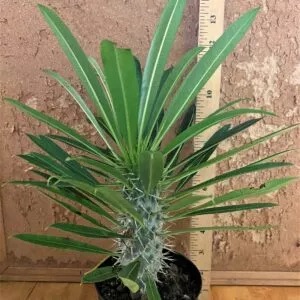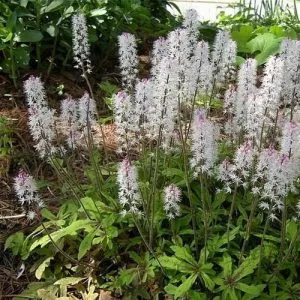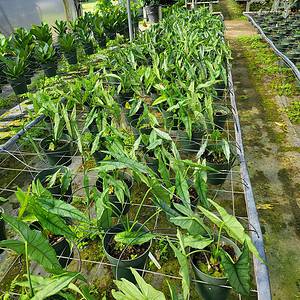No products in the cart.
Table of Contents
If there is one plant that needs little attention to thrive in most environments, it is the elephant ear. The Colocasia gigantea will make your outdoor garden look amazing. Still, you can grow these foliage plants indoors as well.
We can say a lot about this tropical plant that you can enjoy. First, the plant works as a ground cover to protect other plants. Yet, it adds shade to your garden beds, and you can display them on a patio as an ornamental plant with its shape and striking colors.
What is Colocasia Gigantea?
Are you looking to boost your living space or give your garden some appeal? Then the elephant ears are easy to grow with attractive leaves. While it does have some ups and downs, caring for it is not complicated.
The giant elephant ear belongs to three different species Alocasia, Caladium, and Colocasia. These tropical plants grow up to five feet wide and tall. All of them grow from a small root ball or tuber.
The leaves can form a heart or ear shape depending on their genus. When growing elephant ears in their natural habitat, they flourish in tons of humidity. Still, they can withstand dry spells as long as they have consistent moisture and sun exposure.
The foliage plant comes from southeast Asia, but you find them growing in the Northern regions as well. The fantastic thing about the elephant ear is that it grows in parts where other tropical plants do not often thrive.
Colocasia Gigantea Care

Okay, before we take care of your Colocasia gigantea Thailand giant, where should you plant them? The good news is you can grow the elephant ear outdoors in the garden. Or, you grow them in a container to place on the patio or a deck.
For a WOW factor, the dark green leaves at the entryway of a door make a big statement to impress visitors. You can grow the upright elephant ear as long as it gets enough water and light as an indoor plant.
Ideal Soil Mix for Your Green Giant
Growing the upright elephant ears or the Colocasia gigantea needs no particular soil as it can grow in wet to dry conditions. The important thing is that the potting mix needs to be well-drained, organically rich, and have moist soil.
We recommend placing layers of pebbles or rocks between the pot and a saucer to prevent your elephant ears from standing in water resulting in root rot. As the soil needs to remain wet, you can expect to water gardens often in dry weather. Still, the best growing spot is a humid one.
Lighting Condition Suitable for Elephant Ear Plants

The elephant ears, as you know, come from the tropics in Asia and are not a full sun species. So the best spot, whether grown outdoors or inside, needs to be shady. Still, it needs about three to five hours of daylight to help that green foliage remain glowing and healthy.
While the opposite counts for Colocasia with dark green leaves. These plants need a minimum of four hours of sunlight. The elephant ears also need space to grow that is airy around them, or they will have a problem growing.
So, please provide them with partial shade and indirect sunlight for the best TLC in the home.
Watering Requirement to Prevent Root Rot
While the soil for your elephant ear plants needs to remain wet, this will happen more often in the dry season. The best is to keep your plant outdoors where it can receive enough rainwater. An ideal rainfall for your plant is around 1800 to 2700 mm annually.
The important thing is that the water needs to drain away from the plant. Indoor elephant ears thrive in humid areas but should not be overwatered. The rule of thumb is to wait until you feel the soil dry and water below the root area.
Optimal Temperature and Humidity for Elephant Ears
The Colocasia gigantea Thailand giant strain is not picky about its environment or temperature. We recommend temperatures going up to 85°F and the lowest being 45°F. Yes, it is an exotic plant from the tropics. Yet, it can withstand colder zones to a point.
So, to prevent extreme colds and frost, the best is to bring your plant indoors. Hence, your elephant ear plant will grow better in frost-free climates outdoors. Growing your elephant ear indoors needs a high humidity level to flourish.
If you decide to keep your giant size elephant ear outdoors in the winter months, we recommend cutting back the foliage. Alternatively, you can dig your plant up if not too big and leave it to dry out in the sun. Then place it in well-drained soil, a large pot in a sheltered location.
To provide the best moist environment, you can group your Thailand giant strain with other tropical plants. Alternatively, it helps to invest in a humidifier to help keep the moisture levels right.
Fertilizing Elephant Ear Plant
As it is the giant elephant ear, they are heavy feeders during the growing season. You can fertilize them every three weeks. If grown in the ground, a fertilizer with high potassium is best. Or you provide an organically rich feed for healthy growth.
The same applies when growing elephant ears in pots as humidity, filtered sunlight, and some fertilizer combined with liquid seaweed help. On the other hand, you can use a 20-10-10 food but discontinue using it in the winter months.
Grooming and Overwintering Elephant Ear
With the handsome foliage, it does not need significant grooming. Yet, if grown outdoors, establish your plant sheltered to prevent strong winds from damaging the leaf stalks. Also, to avoid leaf burn, keep it away from direct sun.
You only need to remove the spent flowers and leaves throughout the growing season. Another helpful tip is to cut back the withered foliage in the fall before preparing the tubers for overwintering.
Are you part of the northern gardeners where it gets freezing? Then there are some precautions you need to take with your elephant ear plants. The best is to treat them as an annual by digging up the tuber to store and replant them in spring.
Primarily Grown in Beds
After the first frost, cut back the foliage and dig up the tuber.
Ensure that there is enough soil attached to the tubers.
Place the tubers with soil and all in a cool place that is dry and dark until spring arrives.
Grown in Large Containers
When you notice the leaves turn yellow, hold back with watering to let it die back.
Place the elephant ear in a cool, dark, and dry place until spring.
Keep checking the bulbs to ensure they are drying out and not rotting.
If you do find rotted bulbs discard them.
When spring arrives, divide the tubers and re-pot them.
How to Propagate Your Colocasia Gigantea

When summertime arrives, your outdoor and indoor elephant produces several tubers, and you can separate these corms to store them in winter.
Ground Propagation
Take your tubers you have overwintered when spring arrives and dig a trench.
Plant the tubers into the ground.
Cover up with the ground, and you will notice the tubers growing after a few days with small leaf growth.
For Containers
Take your large container and fill it up with soil and fertilizer.
Place the tuber in the soil and wet the soil.
Keep the soil moist and place it in indirect sunlight.
Colocasia Gigantea Varieties
In the Colocasia species, you find many plants you can grow indoors and outside.
Colocasia esculenta Illustris
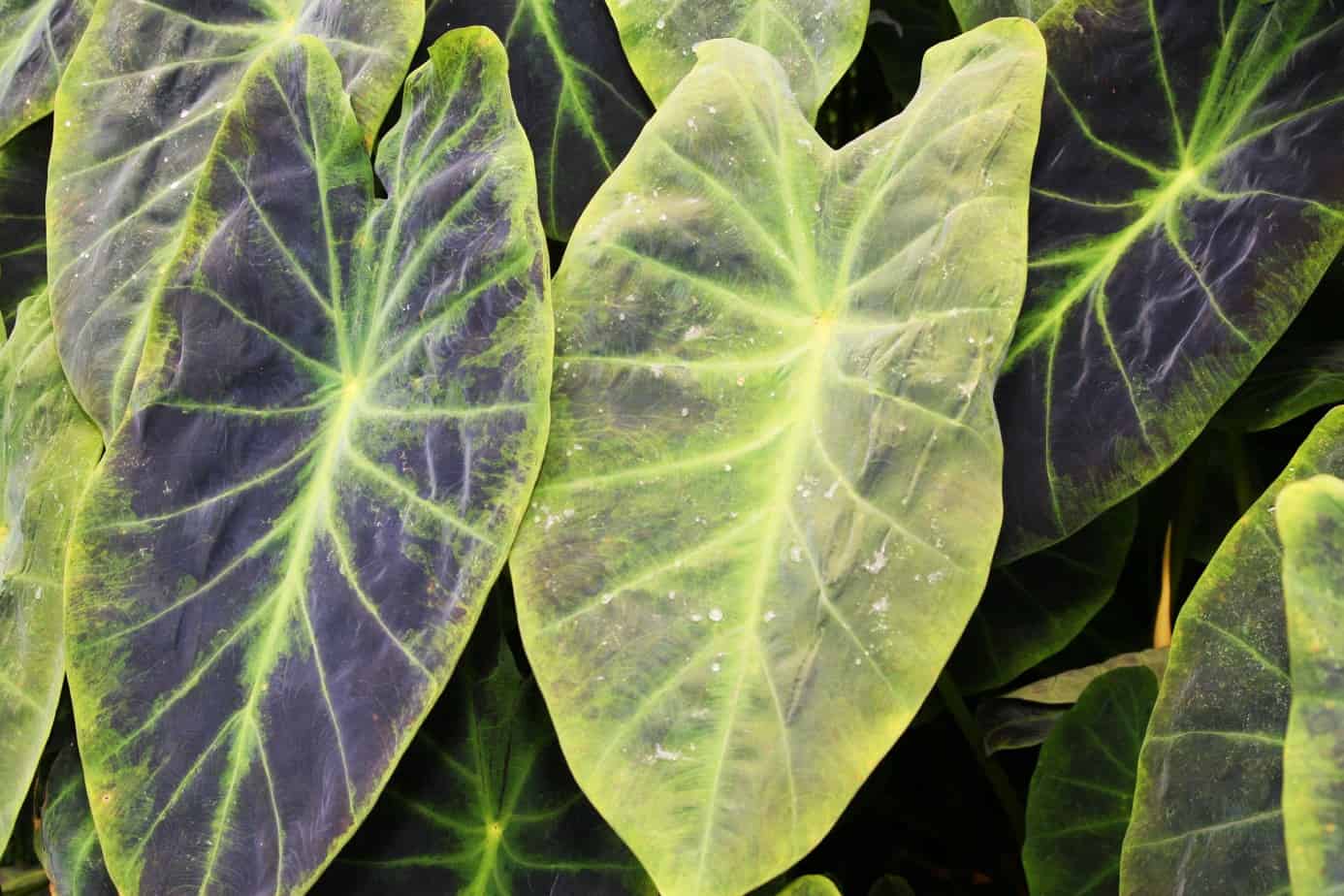
The Toro is mainly grown for its beautiful foliage and is a tuberous perennial. The plant has enormous heart-shaped leaves with dramatic bright green veins. Another notable thing is that the leaves droop. It also has yellow flowers resembling the calla lily-like flowers.
Colocasia esculenta ‘Hawaiian Eye’
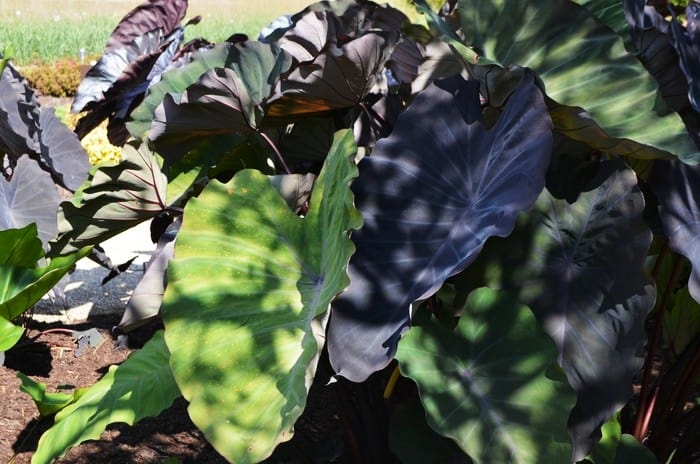
The Hawaiin Eye is intriguing yet elegant to add color to other tropical-looking plants for a robust grower with a black stem and silver-gray veins. As the foliage age, it morphs into gray-green leaves with a dark central eye of purple.
Colocasia esculenta ‘Black Magic’
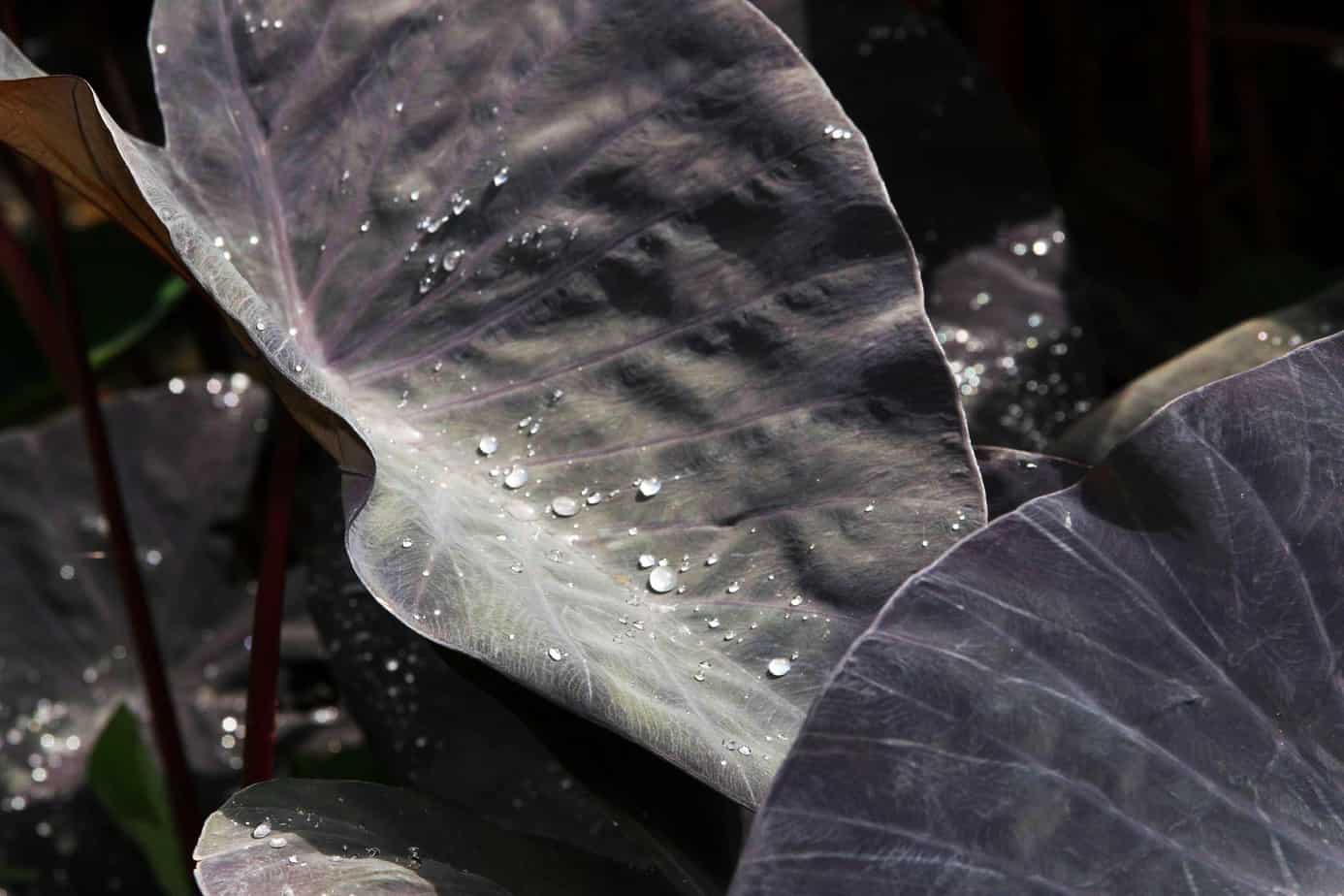
Black magic is the first solid black leaf elephant ear plant introduced by Walter Pagels in California. It has solid black-purple leaves and forms a giant clump reaching five feet tall.
Colocasia Gigantea Diseases and Pests
Whether indoor growing or standing outside in small gardens, Colocasia gigantea Thailand giant can become the home of pests or diseases.
Colocasia Gigantea Thailand Giant Leaves Yellow
Yellow leaves on your green giant can result from old age, too little sun, disease, too much sun, or little water. Sometimes it can happen from not getting enough nutrients or overwatering to feeding too much fertilizer.
Spider Mites on Indoor Elephant
Yes, these little critters love the big water-holding leaves of your Colocasia gigantea Thailand giant. It happens during dry climate spells where you need to water often. You will see a gray webbing on the underside of the foliage. It helps to give your plant a good spray of water. Or, you need to use insecticidal soap or neem oil to help.
Thrips
These insects love the juicy leaves of the elephant ear plants. You will notice pale to silvery patches on the foliage. You can mist your plant often to prevent them from making your plant their home. To remove them, use an insecticide.
Frequently Asked Questions
Elephant ears are fast growers when grown in frost-free climates. You can expect them to grow up to five feet and more in summer if not treated as an annual.
All parts of the elephant ear are poisonous when raw, but the tubers are edible when cooked.
You can grow the Colocasia indoors or outside. The plant has a spreading habit with huge leaves with a velvety texture. You grow the elephant ear plants as a solo garden plant or in a container.
You can look for the elephant ears plant at your local nursery. Or you can find it online with Plantly here. The best part is you need to leave your home as we will deliver it to your door.
Whether you want to buy, sell or simply reach out to other plant enthusiasts, Plantly is the right place to be!
In stock In stock In stock Only 1 left in stock
Free Shipping
$30.00
Sold By:
Painted Petals and More
$32.00Madagascar Palm — Pachypodium lameiei
Only 3 available and it’s in 1 people’s basket Rated 4.78 out of 5 based on 64 customer ratings03
Sold By:
Painted Petals and More
$10.00
Sold By:
JLP farms TN
5 White Foam flower bare root
Only 33 available and it’s in 2 people’s basket Rated 4.85 out of 5 based on 602 customer ratings00
Sold By:
JLP farms TN
$24.99
Sold By:
BubbleBlooms
$29.99Fern Variety Assortment, 6 different Fern plants, in 2 inch pots, Super cute, best gift, plant collection set, variety bundle
Rated 4.81 out of 5 based on 279 customer ratings00
Sold By:
BubbleBlooms
$60.00
Sold By:
Ralph Plants
$80.00ALOCASIA DRAGONS BREATH (GROWERS CHOICE)
Only 1 available and it’s in 1 people’s basket
Sold By:
Ralph Plants
